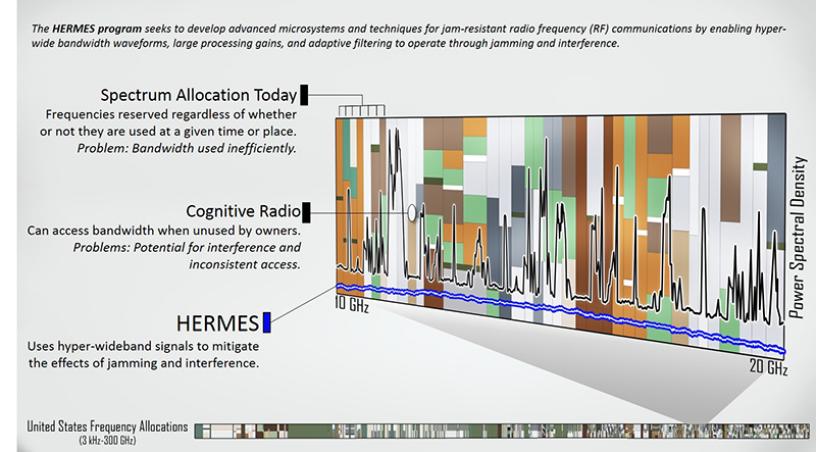Summary

Modern networks and platforms rely on access to the radio frequency (RF) spectrum for communications, radar sensing, command and control, time transfer, and geo-location.
Electromagnetic interference, due to congestion in the spectrum or malicious jamming, can have catastrophic effects. Countering such interference is particularly important for unmanned platforms. To address this challenge, the Hyper-wideband Enabled RF Messaging (HERMES) program seeks to provide an assured link for essential communications by developing a jammer-countering capability that is orders of magnitude beyond the state-of-the-art.
To achieve this dramatic leap in jam-resistance, the HERMES program is focusing on systems that work with extremely wide RF bandwidths.
The goal of the program is to implement a robust wideband (>10 GHz instantaneous bandwidth) RF link residing below 20GHz. The link will operate at a 100 kb/s rate while deploying several jammer rejection techniques—involving processing gain, integrated filters, and active cancellation—that combine to thwart jamming signals that are even 10 million times stronger than the communications signal.
The broad spectral spreading of the signal will assure that the transmit power in any spectral bin will be insufficient to cause unintentional interference.
If successful, the HERMES program could provide unprecedentedly reliable channels of access to the RF spectrum without pre-planned spectral allocation, allowing for a new model of communications.
This program is now complete
This content is available for reference purposes. This page is no longer maintained.
